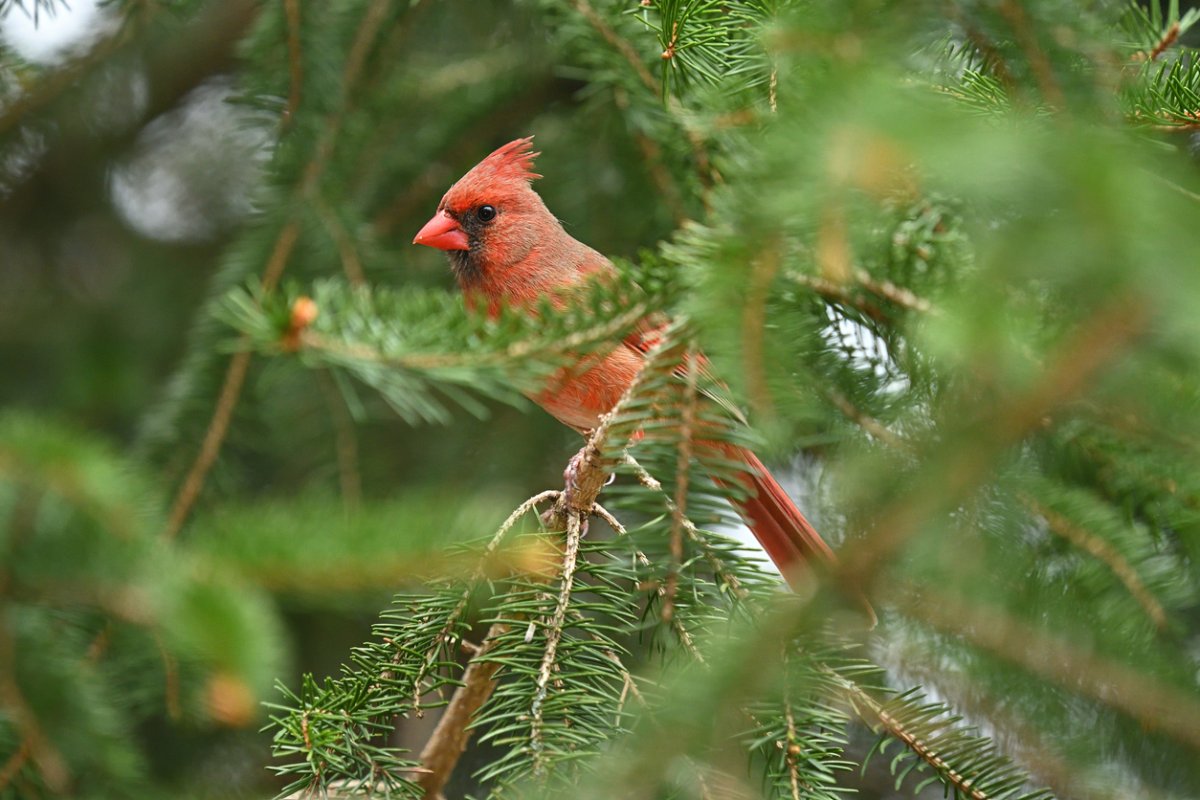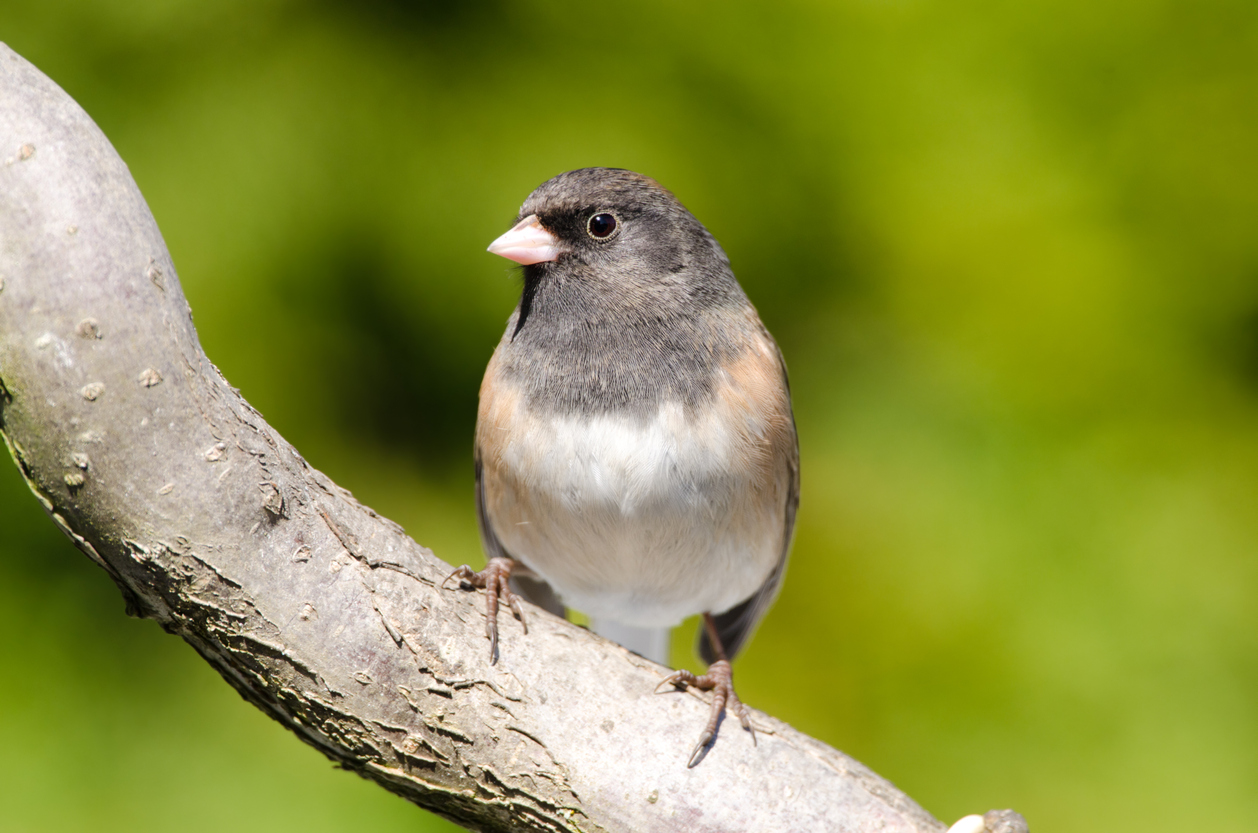

We may earn revenue from the products available on this page and participate in affiliate programs. Learn More ›
You don’t have to be a seasoned ornithologist to appreciate the wonders of birdwatching anymore. As technology advances, we now have more and more information at our fingertips, and even a total novice can learn about local birds with the help of a handy app. Experts at Cornell University have developed a bird identification app called Merlin, that can identify birds through their songs and photos while also providing users with a chance to dive deep into the fascinating world of each bird’s unique calls, habitats, and migratory patterns. Whether you’re listening to the beautiful song of cardinals in your backyard, admiring the hummingbirds at your birdfeeder, or spotting a rare species during a nature hike, Merlin can help enhance your experience. Let’s explore everything this innovative app has to offer.
RELATED: 6 Birds That Get Their Coloring From the Food They Eat and What to Feed Them
What Is Merlin?
Historically, birdwatching meant carrying guidebooks, using binoculars, and jotting down notes by hand. Enthusiasts often spent hours poring over printed illustrations and descriptions, trying to match what they had seen. Today, Merlin stands as a testament to how technology has revolutionized this age-old hobby.
Merlin Bird ID is an app that’s perfect for budding birdwatchers and can act as an educational tool for children and adults alike. It allows users to quickly identify birds that they see or hear from user-uploaded photos and recorded songs. The simplest way to use Merlin is with the Bird ID Wizard feature. By answering just three straightforward questions about a bird you’ve seen—what size it was, what its primary color was, and what it was doing—users are presented with a curated list of potential matches. When inputting a photo or audio recording, users are asked to provide the date and location at which the bird was spotted to give the app further context to make the identification process as accurate as possible.
Once a bird is identified, Merlin provides a comprehensive profile, detailing the bird’s calls, habitat range, and migration patterns.
RELATED: The Best Birdhouses You Can Get
Testing Out the App

I took a stroll in my local park on a sunny autumn afternoon and, having downloaded the Merlin app, I was eager to put it to the test. Spotting a bird on a branch, I quickly took a snapshot. Within seconds, Merlin processed the image and provided me with a detailed profile: I was looking at a dark-eyed junco. It offered several options for which bird it could be, providing photos for each one, which made it easy for me to identify the correct match.
The app didn’t just stop at identification, though—it offered audio clips of a plethora of calls that this bird produces. The app transformed my walk into an educational experience. I was particularly intrigued by the migration patterns and habitat range that came along with the ID, offering insights into where this bird might be throughout the year.
Later, as I walked by a pond, I noticed a group of ducks, which Merlin identified as common mallards. A couple of them had a different appearance, though, with larger bodies and distinctive tail feathers. After submitting a photo to Merlin, the app let me know that I was looking at a double-crested cormorant—a bird known for its impressive diving abilities.
RELATED: 12 Types of Bird Feeders Every Backyard Birder Should Know
The Magic of Merlin

How is Merlin so accurate? The answer lies in its intricate design, combined with a vast dataset. The app leverages data from more than 800 million bird sightings globally, as recorded by the eBird community, who have compiled an extensive database of bird photos, songs, and calls. When a user submits a photo or recording, Merlin uses advanced machine learning algorithms to compare the input against this database. The matching process is fast and highly precise, often narrowing down to the exact species or providing a short list of potential matches.
But the app is not just a static database. Merlin is adaptive; as more users submit identifications and confirm the app’s suggestions, the underlying model gets refined, ensuring that its accuracy continues to improve.
In a time where people often find themselves increasingly disconnected from nature, tools like Merlin bridge the gap, allowing us to intimately engage with our environment. Whether you’re a casual observer or a passionate birder, Merlin can transform every outdoor moment into an opportunity for discovery and learning.
RELATED: 10 Garden Plants That Will Feed Backyard Birds in Fall and Winter
A Word of Caution
While you might be able to play one of Merlin’s bird calls in your backyard and get a response from a member of that species or attract one to your birdfeeder, or from a bird considered to be a rival of that species, this is a practice that is frowned upon by serious birders and biologists. The Audubon Society, for example, says, “Playback of bird calls shouldn’t be used. When a bird leaves his or her nest to pursue or defend their territory from a perceived challenger or predator, eggs and/or chicks are left open to predation and weather conditions.”
